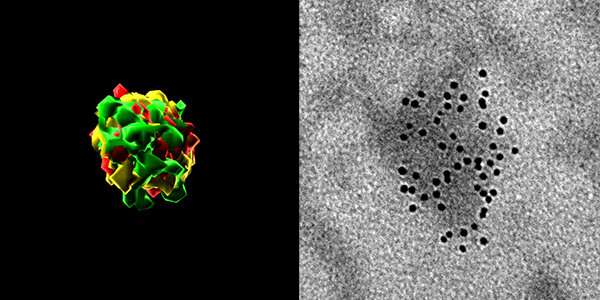This article has been reviewed according to Science X's editorial process and policies. Editors have highlighted the following attributes while ensuring the content's credibility:
fact-checked
peer-reviewed publication
trusted source
proofread
Endogenous retroviruses: Link to programmed aging found

The co-option between viruses and humans plays important roles during human evolution. Endogenous retroviruses (ERVs), belonging to long terminal repeat retrotransposons, are a relic of ancient retroviral infection, fixed in the genome during evolution, comprising about 8% of the human genome. As a result of evolutionary pressure, most human ERVs (HERVs) accumulate mutations and deletions. Moreover, these enemies from ancient times are strictly repressed by host mechanisms such as epigenetic regulation.
Cellular senescence is an important hallmark of aging and aging-related diseases, during which, programmed epigenetic alterations play important roles. However, can endogenous retroviruses, or the enemies within, escape host surveillance during aging? And, if so, will they set the path to the grave of the cell or even the whole organism?
In a study published in Cell on Jan. 6, researchers from the Institute of Zoology and the Beijing Institute of Genomics of the Chinese Academy of Sciences have revealed that the youngest subfamily of ERV is awakened during aging, they proposed a new theory of programed and contagious aging induced by resurrection of ERVs.
They also found ways to control them: a multi-dimensional intervention strategy to block the reactivation and transmission of ERV to alleviate aging.
Using various aging models, including Hutchinson–Gilford progeria syndrome and Werner syndrome, replicatively and physiologically senescent human mesenchymal progenitor cells and human fibroblasts, as well as multiple organs from physiological and pathological aging models of mice, monkeys and humans, combined with multiple technologies, including whole genome profiling of RNA and DNA methylation, high resolution single molecule RNA/DNA-FISH, and highly sensitive digital PCR, the researchers have found that epigenetic derepression (such as heterochromatin loss) leads to transcriptional activation of ERV, thereby increasing the translation of viral proteins, as well as the accumulation of viral-like particles (RVLPs) in senescent cells.
The reverse transcripts of ERVs activate the cGAS-STING-mediated innate immune pathway, thereby eliciting inflammatory responses and accelerating cellular senescence.
Moreover, RVLPs released by senescent cells can effectively transmit and amplify aging signals among organs, tissues and cells in a paracrine or humoral-mediated manner, thereby leading to the senescence of "infected" young cells.
Furthermore, the researchers have developed multiple effective intervention strategies to inhibit the reactivation of ERVs and eliminate viral particles, including CRISPR/dCas9-mediated gene editing systems that target the regulatory elements of ERVs, small molecule drugs that target reverse transcriptase, and neutralizing antibodies that target viral envelope proteins and other technologies.
Each of these intervention strategies blocks a different step of the viral life cycle, such as ERV transcription, reverse transcription, and viral infection, to alleviate tissue and organismal aging.
This study provides evidence that aging-induced resurrection of endogenous retrovirus is a hallmark and driving force of cellular, tissue and organismal aging. These findings provide fresh insights into aging mechanisms and lay the foundation of the theory of programmed, transmissible and intervenable aging. And it opens avenues for establishing a scientific method for evaluating aging and developing clinical strategies to alleviate aging and aging-related diseases.
Altogether, the resurrection of ERV may shed new light onto the "Pandora's box" during aging, which opens up a new scientific field, and paradoxically, brings new hope for preventing and treating aging-related diseases. In the future, more puzzles related to the activation of ERVs during aging need to be solved by continuous efforts of scientists via new techniques.
More information: Xiaoqian Liu et al, Resurrection of endogenous retroviruses during aging reinforces senescence, Cell (2023). DOI: 10.1016/j.cell.2022.12.017
Journal information: Cell
Provided by Chinese Academy of Sciences




















